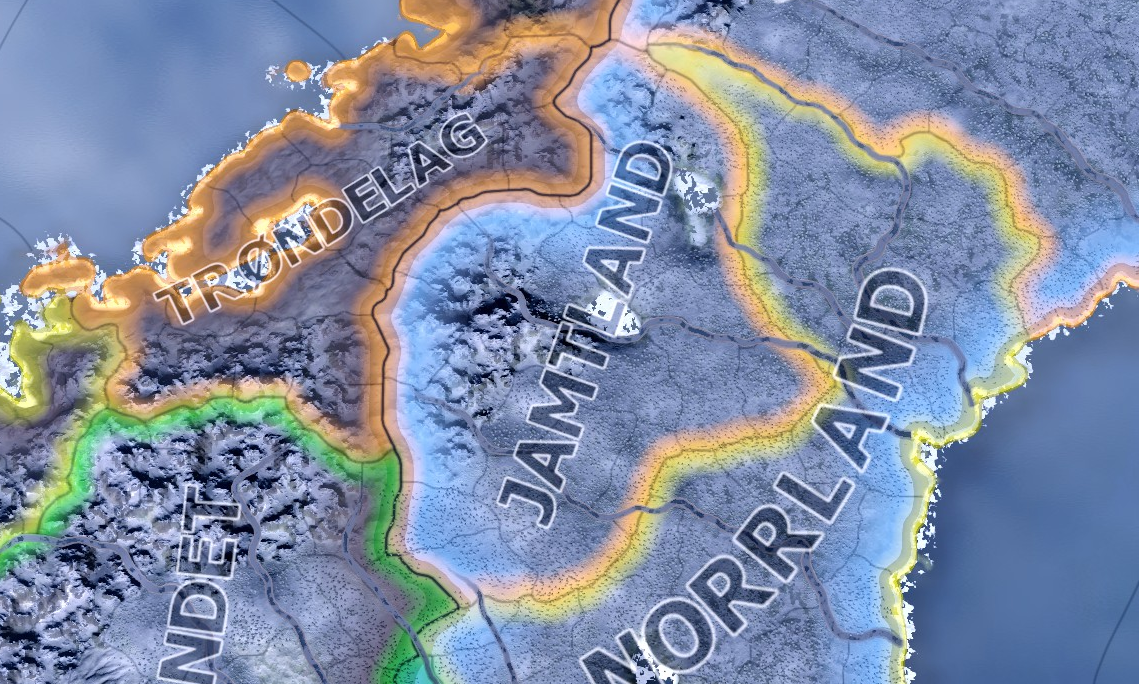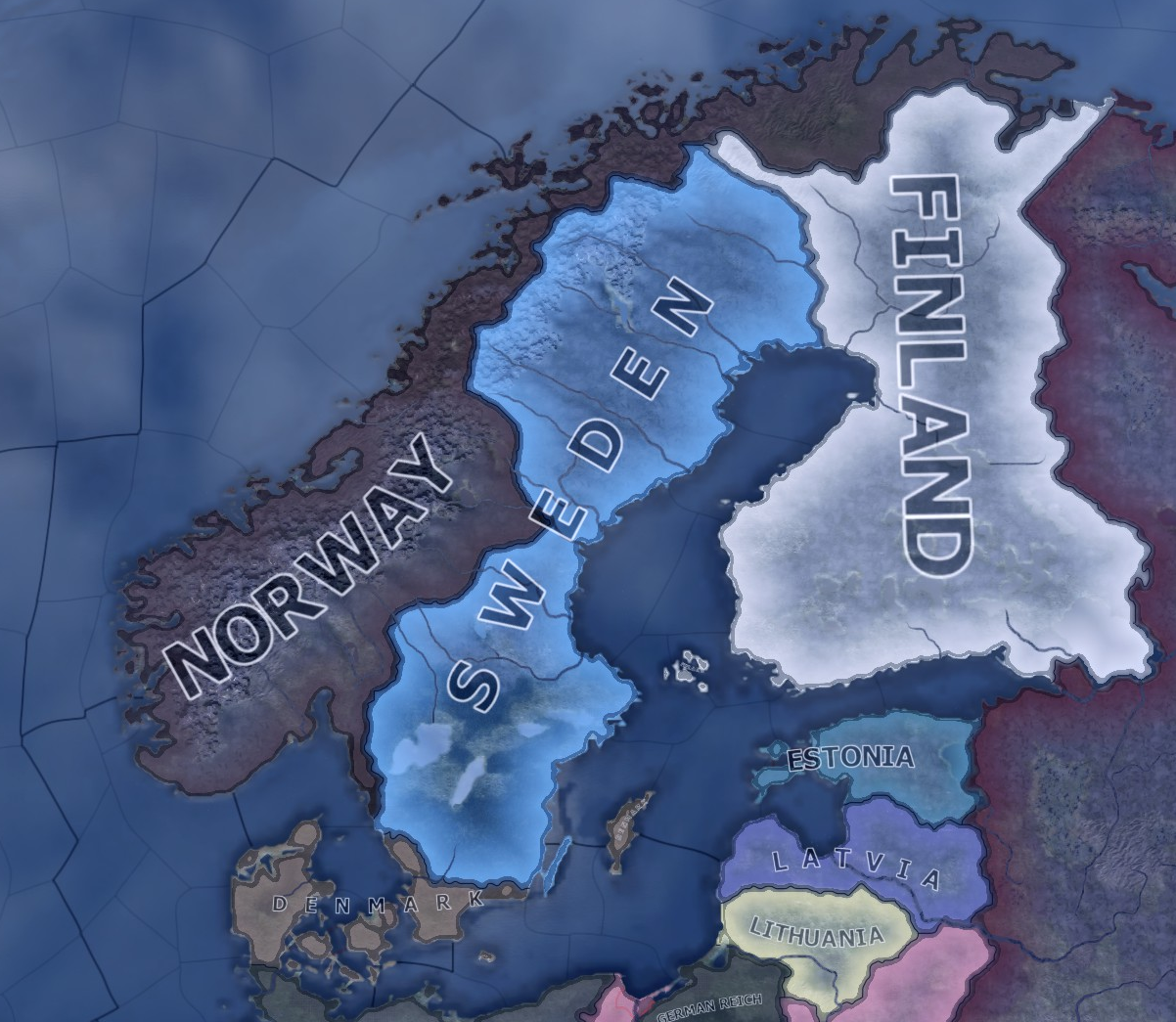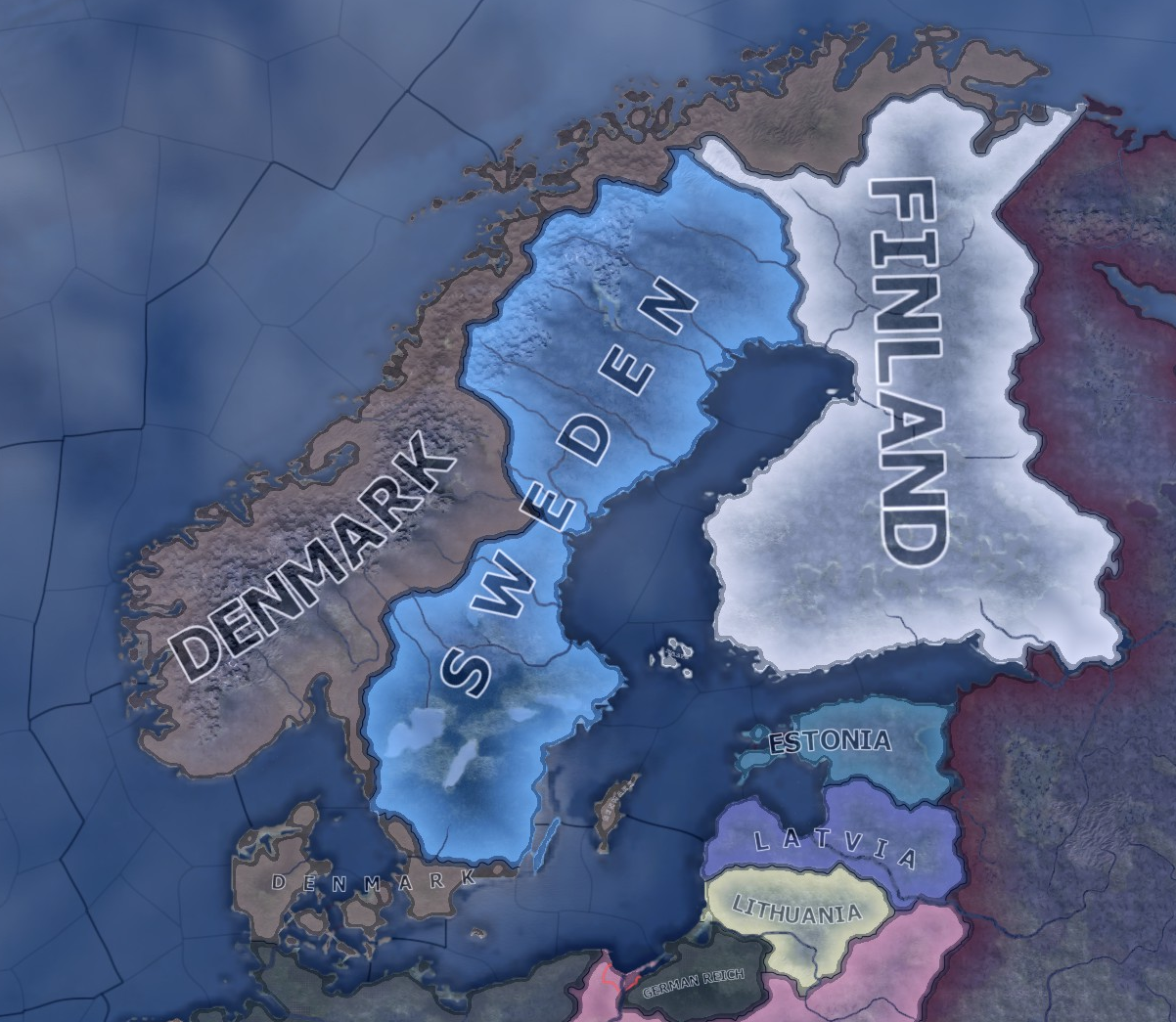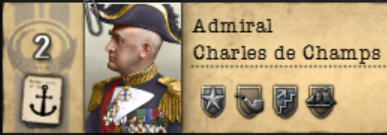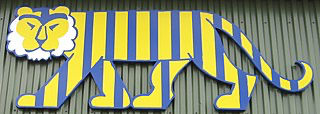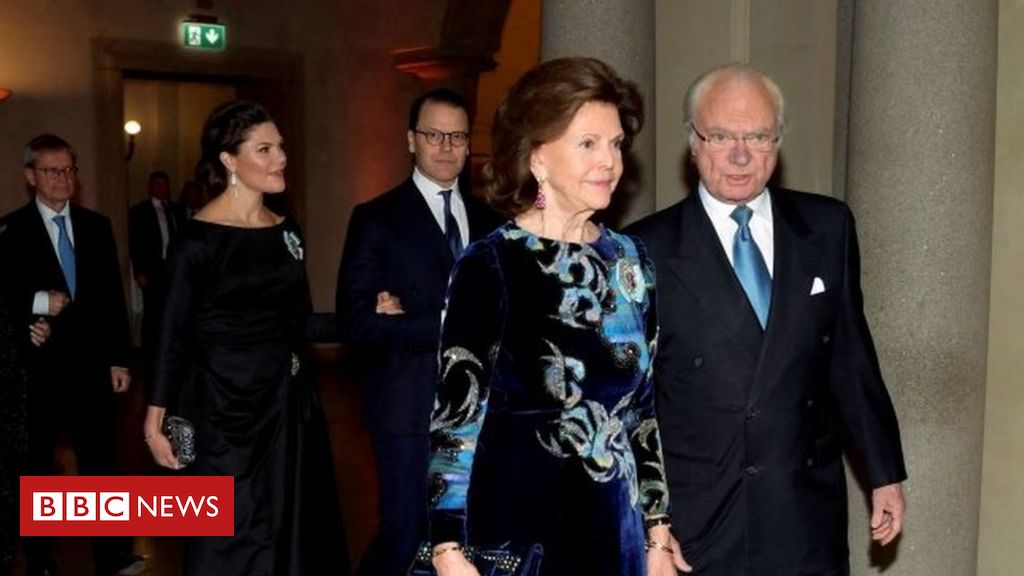Välkommen!
That is of course not English, but rather Swedish which will be today's dev diary. This DD will talk about the branches for the military and industrial branches, as well as democratic branches.
This tree has been a collaboration between me and AveeBee. We have had a longstanding rule in the HoI team that no Swede is allowed to touch a Swedish focus tree, but apparently that rule flew out of the window as long as the Swede in question was supervised by an adult.
Normal caveats apply, there’s work in progress stuff in here, and things might change before release.
Historical Context
As most of you already know, Sweden was the only Nordic country that was not invaded during WW2, but in a similar way to Switzerland was pressed by both the allies and the axis which led to some dubious concessions, but Sweden remained neutral through it all.
While Sweden arguably had the superior military capabilities compared to its Nordic neighbors, it was woefully unprepared for war and was caught with its proverbial pants down on the eve of WW2 with its government preferring to focus on the welfare state rather than its military, something that would change as the war progressed. This will be a major theme for the focus tree in large.
As you might have noticed I keep saying Democratic, not Historical. That is of course because historically Sweden did not join any wars. Me and Amy decided early on that we assume that players _will_ want to get into a war sooner or later, (which is after all a key tenet of the game), which is why even under the Democratic paths you will eventually join the war. (of course the AI will have guardrails against this on historical)
While there are a lot of historical references to things that actually happened, we are assuming that the player wants to engage in the warfare part sooner or later.
Start
At the start of the focus tree you will have the choice to pick from a total of 4 leaders. Historically this was Axel Pehrsson-Bramstorp which only ruled for a few months until Per-Albin Hansson came back in the 1936 election, called the Summer Government.
You can try to keep Per-Albin which will result in a Vote of No Confidence, or you can pick Gösta Bagge which is the right leaning option



Don’t worry about losing out on Per-Albin Hansson though! After the summer is over another election will happen, and you can return him to power. If you went through the hassle of having a Fallen Riksdag you get an additional option of appointing Ernst Wigforss as a Per-Albins successor, or if you want you can continue with the leader you have.
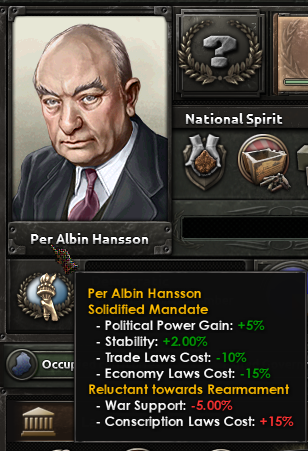

Hungershield and Folkhemmet
Before I continue I need to bring up the issue of stability, or rather Hungersköld (Hungershield). During the first world war Sweden was embargoed by the entente due to iron ore trade with Germany, leading to domestic protests, riots and eventually the ousting of the current Swedish government.
The Swedish PM at the time, Hjalmar Hammarskjöld was nicknamed “Hungerskjöld”, hence the wordplay. At the onset of WW2 the fear of food shortages again loomed large for Sweden, and drove both domestic policies and was a great fear for the populace.
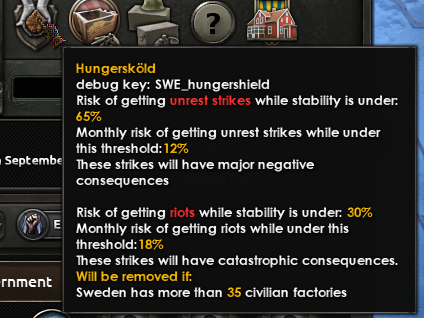
In the game this is represented with stability acting as a shield against such hunger strikes. Being above a % of stability protects the player against those adverse effects, and being below that threshold opens you up to the risk of getting strikes.

Riots can happen if you are at a very low stability. . While they are temporary you will not want to get stuck in an endless cycle of these. There are a few safeguards that we have put in place to make sure that players that temporarily dip under these thresholds will not immediately get these strikes instantly due to a bad RNG roll, but you do not want to stay under the limit for very long.
That leads us to another concept, Folkhemmet (The People's Home). While you might know it as the name of communist Sweden, it was actually a set of social-democratic policies that paved the way for the welfare state that Sweden has today.
The focus on this welfare state was partially why the government at the time was hesitant to spend a lot of the budget on the military, as these programs were very popular. In game this is represented with the Folkhemmet spirit.


As long as the welfare state is intact it acts as a buffer against the risk of getting strikes, but as you can see it also drastically reduces the military capabilities of Sweden.
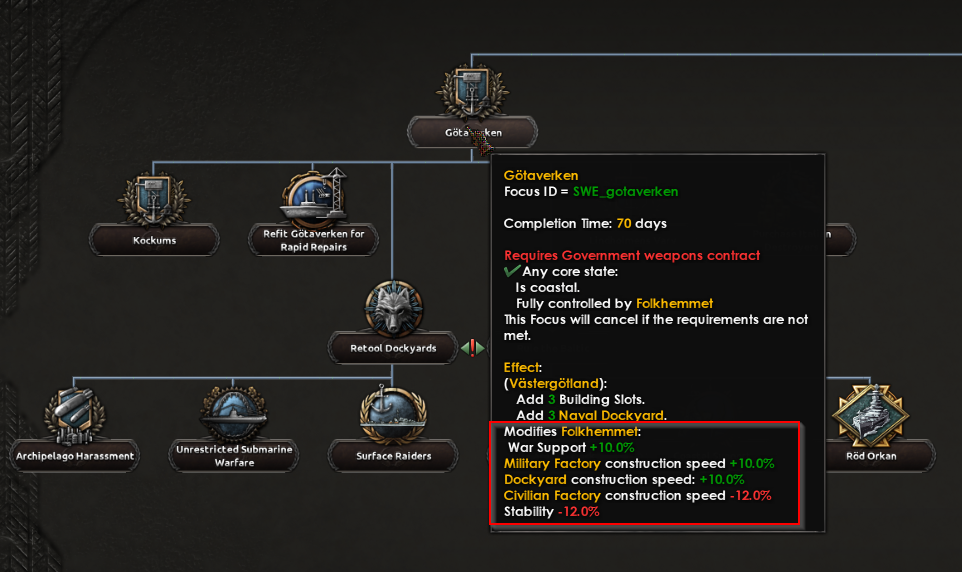
As you progress through the focus tree key focuses will start to orient the Swedish industry towards war, but the Folkhemmet shield that is protecting you from strikes will be chipped away.

To demonstrate this is what a fully degraded Folkhemmet looks like at the moment.
To counter this there's a mix of things the player can do, such as employing advisors, picking focuses that add stability, picking decisions that add stability and so forth. We don’t specifically dictate how you handle this system, but rather hope that players will handle it differently depending on playstyle and how aggressive they want to be.
In a nutshell it is a question of “when do I rearm” and “how do I avoid the adverse consequences of those decisions”, and make sure you also do not get caught with your pants down. With those main themes explained, let's look at the actual tree
Industrial Branch

This is the entrypoint for the focus tree. The Defense Act is where you pick your leader, and just below it is the industrial branch. As you can see there's a clear divide between the focuses, and that you can mix and match some of them.
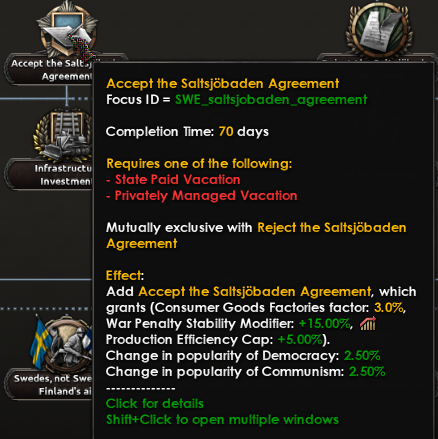



These are two examples, and as you might glean the left side is more aligned with social-democratic policies, while the right one is more aligned with right leaning policies. The right side generally leans more towards ratcheting up the defense industry, while the left one focuses more on the internal stability of the state.
Putting this into context, if you amass a larger pool of stability from these focuses, you might be able to offset the dip in stability from Folkhemmet, but on the other hand it might take longer to do so.

If you really do not want to deal with this at all you can lean heavily into the right and remove it completely.

You can also leverage your ball-bearing trade (the things that make other things spin). Something that Sweden smuggled to both the axis and allies.
Flashpoints
As the events of history unfolds events will happen that put Sweden into contact with the great powers of the war. These are events that we nicknamed Flashpoints, which are historical contextual events that happened to Sweden during the war.

Here Sweden gets accidentally bombed by the USSR

The USSR can apologize or deny this. In this case they deny it, allowing Sweden to respond

Sending military aid to Finland as a response will escalate tensions with the USSR


If the chain of tensions reaches a boiling point it will boil over, dragging Sweden into the war as well, or not depending on how Stalin responds

This is one example of one of these events where tensions might lead to war.
Military Branch

Scrolling right we find the 3 military branches of the focus tree which will be shared between all the paths of the focus tree

What is a bit special though is that part of the tree is locked behind war support (or military factories if you get that far). Instead of providing stuff like military factories these focuses augment the military directly, think of them as a miniature doctrine tree.
The focus behind this “war support gate” is intended to put some additional pressure on the player to want to get war support up, tying back to the interplay of the Folkhemmet and Hungershield.

These are generally divided into a defensive and offensive play style with the left one being more oriented towards defensive oriented players, and the right one being more oriented towards offensive offensive players. (pictured above is the panic button focus)
As you progress through the focuses these spirits grow in strength as you invest more resources into them


While these cornerstone focuses are strong, they require investment in both time, and being gated behind war support. How quick you get to them is decided by how fast you rearm.

You might recognize Bofors in this example which made the popular 40 mm Anti Air gun. In this case Bofors gets a unique trait and funds for the MIO
The military branch of the focus tree is where a lot of Folkhemmet is going to be changed via focuses. It also provides some much needed funds for the Swedish MIOs

Navy Branch

Sweden's navy tree is mainly divided into whether you want to contest the Baltic directly via capital ships or if you prefer to go the German route and focus on submarines and light surface fleet for harassment.
The top shared part deals mainly in expanding the output of the domestic industry, as well as the option to buy older ships from other countries.

As happened historically, the Italian destroyers might take a roundtrip through the world and end up in Iceland, so be aware

Of course we couldn’t resist making a Vasa focus, however we hope that it is slightly more successful than its predecessor.

While its a powerful battleship it deploys at 60% complete, so you’ll need to finish the other 40%.
Winter War

When Finland was invaded by the USSR it reverberated through Sweden. Finland was seen as a first line of defense against the Russian threat, which has been a historic adversary of Sweden.
You are given a choice of whether to go the historic route and send volunteers, try and claim the Åland islands when Finland is weak, or get actively involved in the war. Getting involved in the war will give you a mission of taking Leningrad, and if you or Finland manages to take it the Soviet Union will either be forced to sign a white peace, or face massive unrest. Both Sweden and Finland also get the avatars of their nation to help out, for a while.



If Leningrad is lost the USSR will either be forced to revoke their claim, or face embarrassment.
Democratic Branch
As you probably know Sweden did not enter the war. But in HoI all the preparation and buildup, and later on the war itself is a key component of the core game loop. Aveebee and I decided to take an early design decision to work under the key assumption that players who play Sweden will want to get into the war.
Meaning that we have had to modify the historical path to work with the plan that Sweden will enter the war at some point. Of course the historical Swedish AI will not enter the war unless provoked.
In practice that means that the historical branch will have focuses related to events that did happen in real life, but they work under the thesis of Sweden eventually getting involved as well.
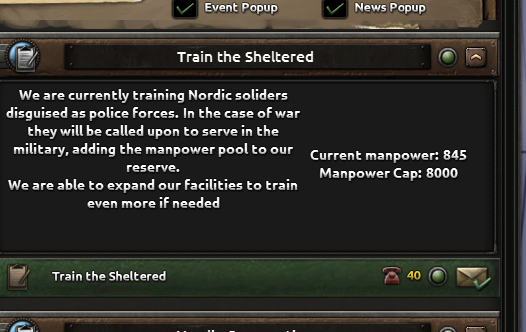
A lot of refugees from other Nordic countries fled to Sweden and were secretly trained as “police forces”. Some of these would later help liberate Norway. In game this focus puts these police forces in a separate pool that grows as more Nordic countries capitulate.
On the onset of war this banked manpower will be unlocked and transferred into the normal manpower pool. You can also expand the facilities to raise the training cap for

Beep Beep
Most important of all is the Per Albin Bus (pictured above). This is a mobile headquarters that the Swedish government planned to run away into the forest with in case of invasion. In game the bus is a state modifier that can be moved to adjacent states, reducing the surrender limit. If the bus gets captured the country leader dies. (We actually got to see this bus when we visited the Army Museum last summer)


You can move the bus as long as you control an adjacent state,which means that you can take Per Albin all the way to Moscow if you really want to for some reason.

Sweden also has access to Rangers, which are special forces that send out undercover troops to sabotage vital infrastructure behind enemy lines. Use it wisely as the casualties of these can be quite high. Very useful to blow up enemy ports in Norway.

As you eventually enter the war by trying to either Save Denmark or Norway Sweden gets a goal to liberate every occupied Nordic country. The more occupied countries the stronger this bonus becomes, with an additional bonus once those countries are liberated.
Nordic Defense Council

If the more careful path of building up your defensive capabilities is a bit too conservative for you there's always the option of forming the Nordic Defense Council. This involves more aggressively tackling the threats around you with the other Nordic countries' help.

It invites every Nordic to become a member state of the council, and you get to pick whether to centralize its command at the cost of its member states not being able to defend themselves as well,
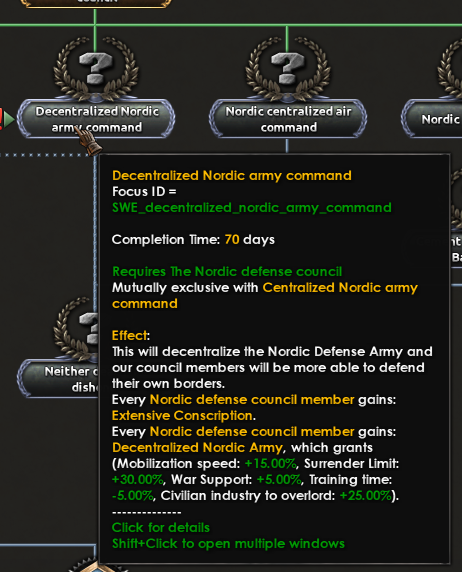
Or decentralize its command into its member states

Here is an example of a centralized command, with Mannerheim and Helge Ljung working side by side

In the end you can opt out of picking either Death or Dishonor, growing stronger the more member states you have.
Late Game Focuses

We also put in some late game focuses, mainly for those that want to continue the campaign after WW2 has concluded. These tie into late game technologies, the new special forces rework and finally dealing with the threat of the iron curtain.

This Lion looks a bit more majestic than the Gripsholm Lion. A frequent on r/badtaxidermy

Advisors, Military and States
As always we have new awesome advisors. Here are the ones available to Sweden.



My favorite one in Sweden is Ebba Margareta, which does not cost anything to hire but can get traits depending on how the player chooses to invest.


We also have the couple Myrdal which feeds off of each other if they are both in the Cabinet.
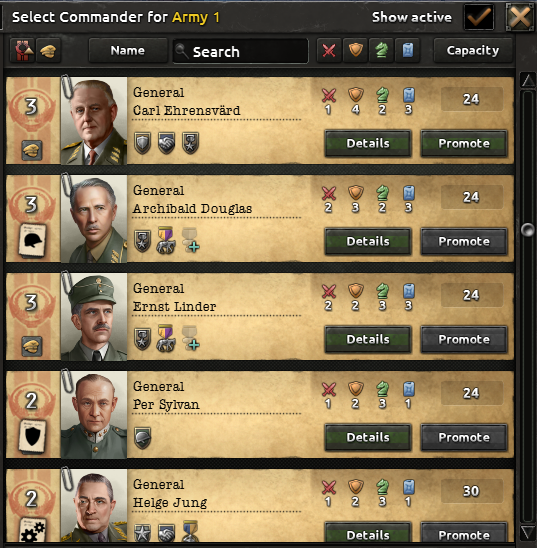

As for the new generals here they are. Most of their experience came as a result of being in the Finnish civil war.

And the Admirals! Charles de Champs is definitively winning the style competition here.

And these are the new Swedish states! My pet peeve of having Norrbotten and Lappland on the map as two separate entities has finally been solved! (sorry for the weird slicing of the image Sweden has a…weird shape). Åland now also starts demilitarizing at the start of the game (which it still is to this day).
And finally, some nice 3D models!





I call this one the Sardine deathtrap (The engine is in the front....)


The Resource redistribution
Finally there’s the question of resources. During WW2 Germany was partially reliant on Swedish iron ore, especially before the fall of France. Arguably the reason why the Narvik campaign happened at all was Germany's desire to secure the Gällivare mines, and the allies desire to blow it up (under the pretense of helping Finland).
We have tried several ways to model this in game but it has been hard for several reasons. The trade algorithm runs the shortest route capital to capital, while the actual resources are located in the north of Sweden. The algorithm also really prefers land routes, which would go across Denmark, or if by sea through the Baltics and not through Narvik as was historically. Changing this is outside the scope of this expansion and while we tried other adding content driven systems on top of this nothing worked satisfactorily up to this point.
I don't rule out some abstraction for Germany controlling Narvik gaining them some IC boost, but currently we decided to sidestep it in another direction, by making Germany a bit more reliant on imports.
Germany has in game had more domestic resources than it actually had in game, leading to a problem of it never really having issues with resources, especially steel. Whatever steel it needed was either in Germany proper, or soon to be taken from France, leading to the “Free Trade Meta” we often see these days.
Part of the issue is the abstraction of coke, ore grade, steel mills into the single encompassing iron which makes this hard to properly represent. All in all Sweden provided around 43%, German domestic production 28.2% and France 12.9% to the German war effort between 1933-1943. Having buildings such as steel mills was also outside the scope of this expansion.
This resulted in an overall reduction in iron for specific countries, main targets were Germany which overall had poor iron ore quality, and France which Germany will gobble up. Germany starts with 2 civilian factories more than before to use for import as needed. Portugal also got some tungsten shifted to Sweden. Below are the main changes, with no changes in trade law from 1936 starting dates, accounting for starting infrastructure and no equipment lines active.
Germany
AAT

PRE-AAT

France
AAT

PRE-AAT

Portugal
AAT

PRE-AAT

SWE
AAT

PRE-AAT

These numbers are not final and might change depending on balance and how the AI performs.
View attachment Focus Tree.png
Whole Focus Tree Above
I don't have any good ways to end this, so I'll just stop by saying
That is of course not English, but rather Swedish which will be today's dev diary. This DD will talk about the branches for the military and industrial branches, as well as democratic branches.
This tree has been a collaboration between me and AveeBee. We have had a longstanding rule in the HoI team that no Swede is allowed to touch a Swedish focus tree, but apparently that rule flew out of the window as long as the Swede in question was supervised by an adult.
Normal caveats apply, there’s work in progress stuff in here, and things might change before release.
Historical Context
As most of you already know, Sweden was the only Nordic country that was not invaded during WW2, but in a similar way to Switzerland was pressed by both the allies and the axis which led to some dubious concessions, but Sweden remained neutral through it all.
While Sweden arguably had the superior military capabilities compared to its Nordic neighbors, it was woefully unprepared for war and was caught with its proverbial pants down on the eve of WW2 with its government preferring to focus on the welfare state rather than its military, something that would change as the war progressed. This will be a major theme for the focus tree in large.
As you might have noticed I keep saying Democratic, not Historical. That is of course because historically Sweden did not join any wars. Me and Amy decided early on that we assume that players _will_ want to get into a war sooner or later, (which is after all a key tenet of the game), which is why even under the Democratic paths you will eventually join the war. (of course the AI will have guardrails against this on historical)
While there are a lot of historical references to things that actually happened, we are assuming that the player wants to engage in the warfare part sooner or later.
Start
At the start of the focus tree you will have the choice to pick from a total of 4 leaders. Historically this was Axel Pehrsson-Bramstorp which only ruled for a few months until Per-Albin Hansson came back in the 1936 election, called the Summer Government.
You can try to keep Per-Albin which will result in a Vote of No Confidence, or you can pick Gösta Bagge which is the right leaning option



Don’t worry about losing out on Per-Albin Hansson though! After the summer is over another election will happen, and you can return him to power. If you went through the hassle of having a Fallen Riksdag you get an additional option of appointing Ernst Wigforss as a Per-Albins successor, or if you want you can continue with the leader you have.


Hungershield and Folkhemmet
Before I continue I need to bring up the issue of stability, or rather Hungersköld (Hungershield). During the first world war Sweden was embargoed by the entente due to iron ore trade with Germany, leading to domestic protests, riots and eventually the ousting of the current Swedish government.
The Swedish PM at the time, Hjalmar Hammarskjöld was nicknamed “Hungerskjöld”, hence the wordplay. At the onset of WW2 the fear of food shortages again loomed large for Sweden, and drove both domestic policies and was a great fear for the populace.

In the game this is represented with stability acting as a shield against such hunger strikes. Being above a % of stability protects the player against those adverse effects, and being below that threshold opens you up to the risk of getting strikes.

Riots can happen if you are at a very low stability. . While they are temporary you will not want to get stuck in an endless cycle of these. There are a few safeguards that we have put in place to make sure that players that temporarily dip under these thresholds will not immediately get these strikes instantly due to a bad RNG roll, but you do not want to stay under the limit for very long.
That leads us to another concept, Folkhemmet (The People's Home). While you might know it as the name of communist Sweden, it was actually a set of social-democratic policies that paved the way for the welfare state that Sweden has today.
The focus on this welfare state was partially why the government at the time was hesitant to spend a lot of the budget on the military, as these programs were very popular. In game this is represented with the Folkhemmet spirit.

As long as the welfare state is intact it acts as a buffer against the risk of getting strikes, but as you can see it also drastically reduces the military capabilities of Sweden.

As you progress through the focus tree key focuses will start to orient the Swedish industry towards war, but the Folkhemmet shield that is protecting you from strikes will be chipped away.

To demonstrate this is what a fully degraded Folkhemmet looks like at the moment.
To counter this there's a mix of things the player can do, such as employing advisors, picking focuses that add stability, picking decisions that add stability and so forth. We don’t specifically dictate how you handle this system, but rather hope that players will handle it differently depending on playstyle and how aggressive they want to be.
In a nutshell it is a question of “when do I rearm” and “how do I avoid the adverse consequences of those decisions”, and make sure you also do not get caught with your pants down. With those main themes explained, let's look at the actual tree
Industrial Branch

This is the entrypoint for the focus tree. The Defense Act is where you pick your leader, and just below it is the industrial branch. As you can see there's a clear divide between the focuses, and that you can mix and match some of them.




These are two examples, and as you might glean the left side is more aligned with social-democratic policies, while the right one is more aligned with right leaning policies. The right side generally leans more towards ratcheting up the defense industry, while the left one focuses more on the internal stability of the state.
Putting this into context, if you amass a larger pool of stability from these focuses, you might be able to offset the dip in stability from Folkhemmet, but on the other hand it might take longer to do so.

If you really do not want to deal with this at all you can lean heavily into the right and remove it completely.

You can also leverage your ball-bearing trade (the things that make other things spin). Something that Sweden smuggled to both the axis and allies.
Flashpoints
As the events of history unfolds events will happen that put Sweden into contact with the great powers of the war. These are events that we nicknamed Flashpoints, which are historical contextual events that happened to Sweden during the war.

Here Sweden gets accidentally bombed by the USSR

The USSR can apologize or deny this. In this case they deny it, allowing Sweden to respond

Sending military aid to Finland as a response will escalate tensions with the USSR


If the chain of tensions reaches a boiling point it will boil over, dragging Sweden into the war as well, or not depending on how Stalin responds

This is one example of one of these events where tensions might lead to war.
Military Branch

Scrolling right we find the 3 military branches of the focus tree which will be shared between all the paths of the focus tree

What is a bit special though is that part of the tree is locked behind war support (or military factories if you get that far). Instead of providing stuff like military factories these focuses augment the military directly, think of them as a miniature doctrine tree.
The focus behind this “war support gate” is intended to put some additional pressure on the player to want to get war support up, tying back to the interplay of the Folkhemmet and Hungershield.

These are generally divided into a defensive and offensive play style with the left one being more oriented towards defensive oriented players, and the right one being more oriented towards offensive offensive players. (pictured above is the panic button focus)
As you progress through the focuses these spirits grow in strength as you invest more resources into them


While these cornerstone focuses are strong, they require investment in both time, and being gated behind war support. How quick you get to them is decided by how fast you rearm.

You might recognize Bofors in this example which made the popular 40 mm Anti Air gun. In this case Bofors gets a unique trait and funds for the MIO
The military branch of the focus tree is where a lot of Folkhemmet is going to be changed via focuses. It also provides some much needed funds for the Swedish MIOs

Navy Branch

Sweden's navy tree is mainly divided into whether you want to contest the Baltic directly via capital ships or if you prefer to go the German route and focus on submarines and light surface fleet for harassment.
The top shared part deals mainly in expanding the output of the domestic industry, as well as the option to buy older ships from other countries.

As happened historically, the Italian destroyers might take a roundtrip through the world and end up in Iceland, so be aware

Of course we couldn’t resist making a Vasa focus, however we hope that it is slightly more successful than its predecessor.

While its a powerful battleship it deploys at 60% complete, so you’ll need to finish the other 40%.
Winter War

When Finland was invaded by the USSR it reverberated through Sweden. Finland was seen as a first line of defense against the Russian threat, which has been a historic adversary of Sweden.
You are given a choice of whether to go the historic route and send volunteers, try and claim the Åland islands when Finland is weak, or get actively involved in the war. Getting involved in the war will give you a mission of taking Leningrad, and if you or Finland manages to take it the Soviet Union will either be forced to sign a white peace, or face massive unrest. Both Sweden and Finland also get the avatars of their nation to help out, for a while.



If Leningrad is lost the USSR will either be forced to revoke their claim, or face embarrassment.
Democratic Branch
As you probably know Sweden did not enter the war. But in HoI all the preparation and buildup, and later on the war itself is a key component of the core game loop. Aveebee and I decided to take an early design decision to work under the key assumption that players who play Sweden will want to get into the war.
Meaning that we have had to modify the historical path to work with the plan that Sweden will enter the war at some point. Of course the historical Swedish AI will not enter the war unless provoked.
In practice that means that the historical branch will have focuses related to events that did happen in real life, but they work under the thesis of Sweden eventually getting involved as well.

A lot of refugees from other Nordic countries fled to Sweden and were secretly trained as “police forces”. Some of these would later help liberate Norway. In game this focus puts these police forces in a separate pool that grows as more Nordic countries capitulate.
On the onset of war this banked manpower will be unlocked and transferred into the normal manpower pool. You can also expand the facilities to raise the training cap for

Beep Beep
Most important of all is the Per Albin Bus (pictured above). This is a mobile headquarters that the Swedish government planned to run away into the forest with in case of invasion. In game the bus is a state modifier that can be moved to adjacent states, reducing the surrender limit. If the bus gets captured the country leader dies. (We actually got to see this bus when we visited the Army Museum last summer)


You can move the bus as long as you control an adjacent state,which means that you can take Per Albin all the way to Moscow if you really want to for some reason.

Sweden also has access to Rangers, which are special forces that send out undercover troops to sabotage vital infrastructure behind enemy lines. Use it wisely as the casualties of these can be quite high. Very useful to blow up enemy ports in Norway.

As you eventually enter the war by trying to either Save Denmark or Norway Sweden gets a goal to liberate every occupied Nordic country. The more occupied countries the stronger this bonus becomes, with an additional bonus once those countries are liberated.
Nordic Defense Council

If the more careful path of building up your defensive capabilities is a bit too conservative for you there's always the option of forming the Nordic Defense Council. This involves more aggressively tackling the threats around you with the other Nordic countries' help.

It invites every Nordic to become a member state of the council, and you get to pick whether to centralize its command at the cost of its member states not being able to defend themselves as well,

Or decentralize its command into its member states

Here is an example of a centralized command, with Mannerheim and Helge Ljung working side by side

In the end you can opt out of picking either Death or Dishonor, growing stronger the more member states you have.
Late Game Focuses

We also put in some late game focuses, mainly for those that want to continue the campaign after WW2 has concluded. These tie into late game technologies, the new special forces rework and finally dealing with the threat of the iron curtain.

This Lion looks a bit more majestic than the Gripsholm Lion. A frequent on r/badtaxidermy

Advisors, Military and States
As always we have new awesome advisors. Here are the ones available to Sweden.



My favorite one in Sweden is Ebba Margareta, which does not cost anything to hire but can get traits depending on how the player chooses to invest.


We also have the couple Myrdal which feeds off of each other if they are both in the Cabinet.


As for the new generals here they are. Most of their experience came as a result of being in the Finnish civil war.

And the Admirals! Charles de Champs is definitively winning the style competition here.

And these are the new Swedish states! My pet peeve of having Norrbotten and Lappland on the map as two separate entities has finally been solved! (sorry for the weird slicing of the image Sweden has a…weird shape). Åland now also starts demilitarizing at the start of the game (which it still is to this day).
And finally, some nice 3D models!





I call this one the Sardine deathtrap (The engine is in the front....)


The Resource redistribution
Finally there’s the question of resources. During WW2 Germany was partially reliant on Swedish iron ore, especially before the fall of France. Arguably the reason why the Narvik campaign happened at all was Germany's desire to secure the Gällivare mines, and the allies desire to blow it up (under the pretense of helping Finland).
We have tried several ways to model this in game but it has been hard for several reasons. The trade algorithm runs the shortest route capital to capital, while the actual resources are located in the north of Sweden. The algorithm also really prefers land routes, which would go across Denmark, or if by sea through the Baltics and not through Narvik as was historically. Changing this is outside the scope of this expansion and while we tried other adding content driven systems on top of this nothing worked satisfactorily up to this point.
I don't rule out some abstraction for Germany controlling Narvik gaining them some IC boost, but currently we decided to sidestep it in another direction, by making Germany a bit more reliant on imports.
Germany has in game had more domestic resources than it actually had in game, leading to a problem of it never really having issues with resources, especially steel. Whatever steel it needed was either in Germany proper, or soon to be taken from France, leading to the “Free Trade Meta” we often see these days.
Part of the issue is the abstraction of coke, ore grade, steel mills into the single encompassing iron which makes this hard to properly represent. All in all Sweden provided around 43%, German domestic production 28.2% and France 12.9% to the German war effort between 1933-1943. Having buildings such as steel mills was also outside the scope of this expansion.
This resulted in an overall reduction in iron for specific countries, main targets were Germany which overall had poor iron ore quality, and France which Germany will gobble up. Germany starts with 2 civilian factories more than before to use for import as needed. Portugal also got some tungsten shifted to Sweden. Below are the main changes, with no changes in trade law from 1936 starting dates, accounting for starting infrastructure and no equipment lines active.
Germany
AAT
PRE-AAT
France
AAT
PRE-AAT
Portugal
AAT
PRE-AAT
SWE
AAT
PRE-AAT
These numbers are not final and might change depending on balance and how the AI performs.
View attachment Focus Tree.png
Whole Focus Tree Above
I don't have any good ways to end this, so I'll just stop by saying



